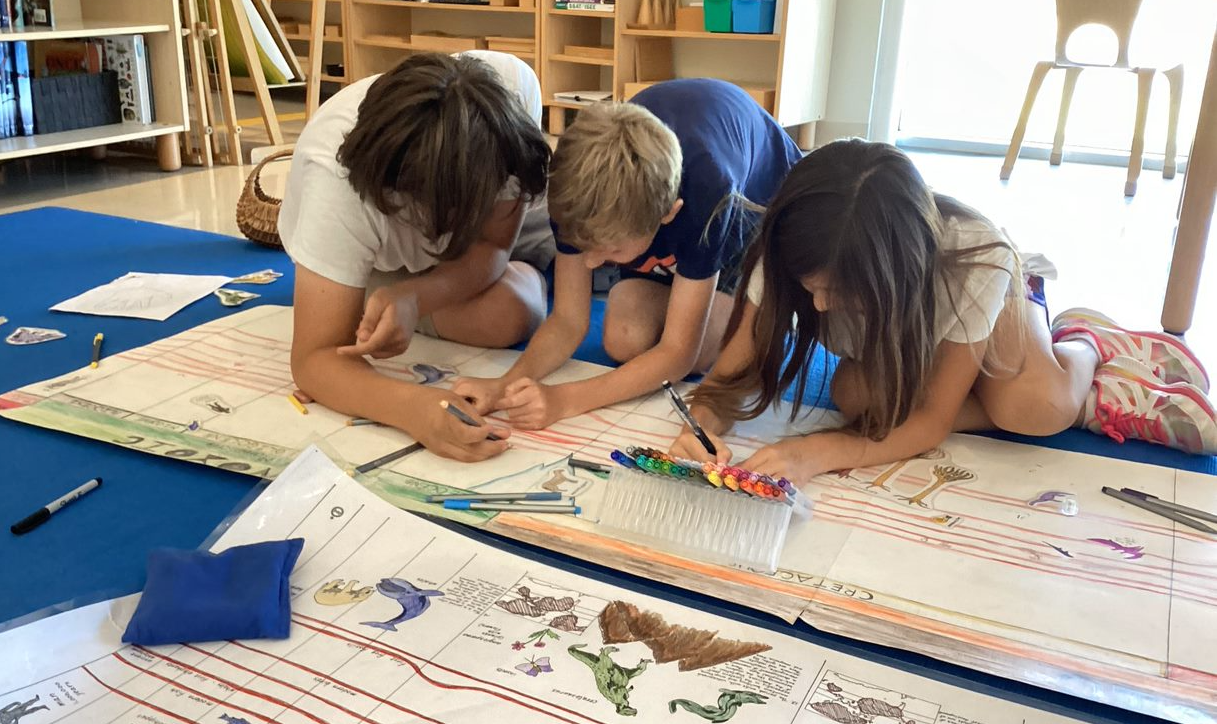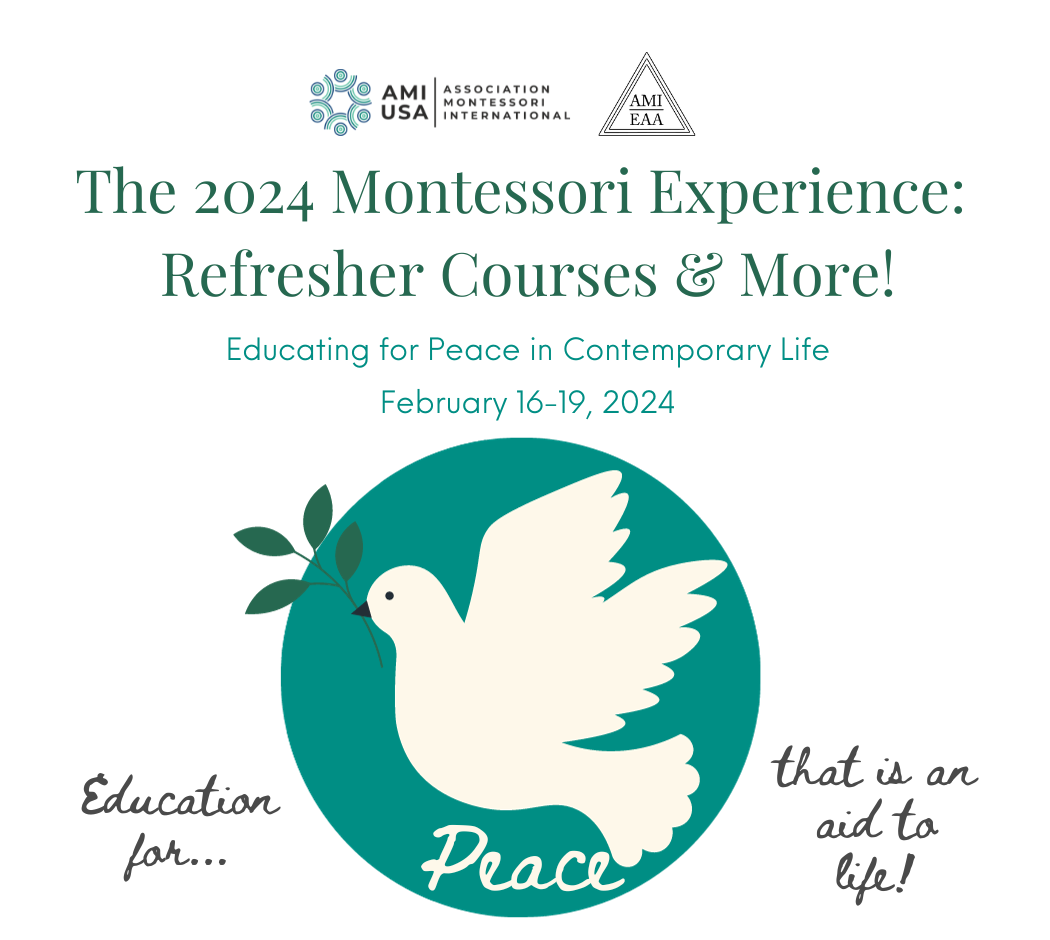These are a few unique features we want to highlight about our Elementary Program, but we also encourage you to observe in a classroom to see the students in action! We think you’ll find yourself impressed with the scope of skills covered in a Montessori class (as well as the absolute joy of the children who you see there).
1. Cosmic Education
As children enter the second plane of development, they are curious about how people relate to one another and how things fit together in the universe. To launch children into this work, we present five “Great Lessons” that are explored in many ways throughout the six-year cycle, inspiring students to use their imaginations and learn about their universe.
The five Great Lessons are: Coming of the Universe and the Earth; Coming of Life; Coming of Human Beings; Communication in Signs; and the Story of Numbers.
The Lessons are designed to be big, dramatic, impressionistic introductions to a broad topic. They spark the child’s wonder and curiosity, and they lend themselves to branching off into a myriad of directions so that when the child receives the lesson each year during the cycle, they not only glean new information from it as they age, but the follow-up study is continuously fresh and exciting.
Dr. Montessori believed Cosmic Education is needed not only to satisfy the child’s individual needs, but for the betterment of society. If we can lead people to understand the functions of and connections between the various systems and living things, then we’re all better off!
“Since it has been seen to be necessary to give so much to the child, let us give him a vision of the whole universe. The universe is an imposing reality, and an answer to all questions.” – Dr. Montessori
2. Spiral Curriculum
Dr. Montessori also recognized the importance of repetition for learning. The Elementary Guide introduces big concepts multiple times throughout the six-year cycle. Each time, the child is able to engage in the ideas at a broader, deeper level expanding their grasp of the lesson and developing synthetic thinking.
“Knowledge can be best given where there is eagerness to learn, so this is the period when the seed of everything can be sown, the child’s mind being a fertile field, ready to receive what will germinate into culture.” – Dr. Montessori
3. Collaborative Work
The emerging sense of justice and morality in the second plane of development must be explored in the context of their peers. Lots of testing is being done around what is appropriate in a social setting and how individual choices impact others, the community and the planet.
Thus, collaborating and group work are an integral part of Montessori elementary classrooms. In the process of working together on projects, social emotional learning is built into the curriculum. Collaborative work builds emotional awareness and teaches children to problem solve, respect others and develop an appreciation for diverse talents and gifts.
As they develop these collaborative skills, each individual comes to recognize not only the power of the group, but also what it means to belong to a group in a meaningful way.
4. Hands-On Work and Materials Designed to Support the Emergence of Abstract Thinking
There is a general philosophy among Montessori educators that the concrete precedes the abstract. This is because Dr. Montessori recognized the critical connection between the hand and the brain. Using the hand in a particular way is correlated with the development of neural pathways.
Knowing this, we provide extensive access to learning materials that students manipulate with their hands, such as crocheting, knitting, building and constructing large projects, cursive writing, using a typewriter, and much more. These activities further encourage hand and brain development.
As they get older (particularly in later elementary and middle school), they begin to shift away from needing materials and work more without. Still, it’s important that they’ve had experiences of learning with their hands first so that abstract learning becomes deeper and leads to greater comprehension (and interest!).
“Children show a great attachment to the abstract subjects when they arrive at them through manual activity.” – Dr. Montessori
5. Grace and Courtesy
At CMS, we give opportunities to practice grace and courtesy by teaching them how to greet others, how to resolve conflicts and how to help someone who needs it.
During the early elementary years, students are more capable of abstract thought. They also have an internal drive toward fairness and justice, which makes them primed to learn about peace, kindness, empathy and generosity. We can be rather frank with children when teaching about many of the injustices in our world. They want to learn, and they will want to help.
Service projects are a great way for children to engage with grace and courtesy work. Some projects our Elementary students have done include:
● Hosting a bake sale to raise funds for children displaced by the war in Ukraine.
● Cleaning up trash around the school grounds and the local neighborhood.
● Collecting quarters for those using coin-operated laundry and were recently displaced in STL.
There are many traits nurtured in the Montessori environment, including service-mindedness, but here are five of the lesser-known traits that might surprise you!
6. Going Out
Imagine that a group of children have been studying something in the classroom, but they’ve exhausted all of their resources and are eager to learn more. This is when students will start planning for a “Going Out.”
Unlike a traditional school where outings are planned by adults, students plan these trips themselves from start to finish, including the budget, schedule, arranging rides, getting directions, and emailing or calling their parents to get permission. This experience serves the children’s need for independence, collaboration and “real-world” experience. They want to learn everything about the universe and the universe won’t fit into our classrooms!
7. Supporting the Imagination
We know that children need to experience the concrete first to truly master content later. But when a child gets older, they are far more interested in using their imaginations. So why not feed their imaginations with truths about their universe?
Children at this age understand the difference between reality and fantasy, which is an important distinction. Fantasy is where we make room for things like dragons and mermaids, while imagination is the ability to picture an idea in your mind, to synthesize previous concepts and visualize new ones.
In the Montessori Elementary environment, ideas are introduced through impressionistic charts and stories that spark interest. Then, children follow up with work in a way that aligns with their interests and allows them to discover their passions.
“The secret of good teaching is to regard the child’s intelligence as a fertile field in which the seeds may be sown, to grow under the heat of flaming imagination. Our aim therefore is not merely to make the child understand, and still less to force him to memorize, but to touch his imagination as to enthuse him to his inmost core.” – Dr. Montessori
8. The Arts
Art and creativity are integrated into the curriculum through music, theater, dance, drawing/paining, and so much more. Due to the holistic and interdisciplinary nature of the program, children often use these creative expressions to anchor their learning.
For instance, students have written plays about the Titanic and the Trail of Tears, composed poems about nature and organized events and invited the community. All of their projects are based in research about these topics, and they determine how to display their work.
Other examples include composed music, writing stories, choreographed dances to demonstrate understanding of geometry, music and different cultures, baked pies and cookies, watercolor paintings, three-dimensional models, etc.
Discover more about art and creativity in our Montessori classrooms.
9. Problem-Solving Skills
The freedom and self-direction inherent in a Montessori classroom create responsible, resourceful, resilient human beings. Children determine, with just enough support from their teacher as necessary, which direction to take their research after receiving lessons. They keep track of their work in work journals and meet with the guide often to discuss their progress, set goals and create plans to further their knowledge.
The classroom is prepared to allow them to learn through experience, and they become comfortable learning from their mistakes.
Learn more about how we empower Elementary children in their educational journey at CMS.
Quite simply, there is nothing quite like an authentic Montessori education for your child! That’s why 95% of our students who stay through the Upper Elementary Program are admitted to their first-choice secondary school. More importantly, it’s why children at CMS love to come to school! They develop a passion for learning that leads to success for life.
All quotes in this article are from To Educate the Human Potential by Maria Montessori.


















